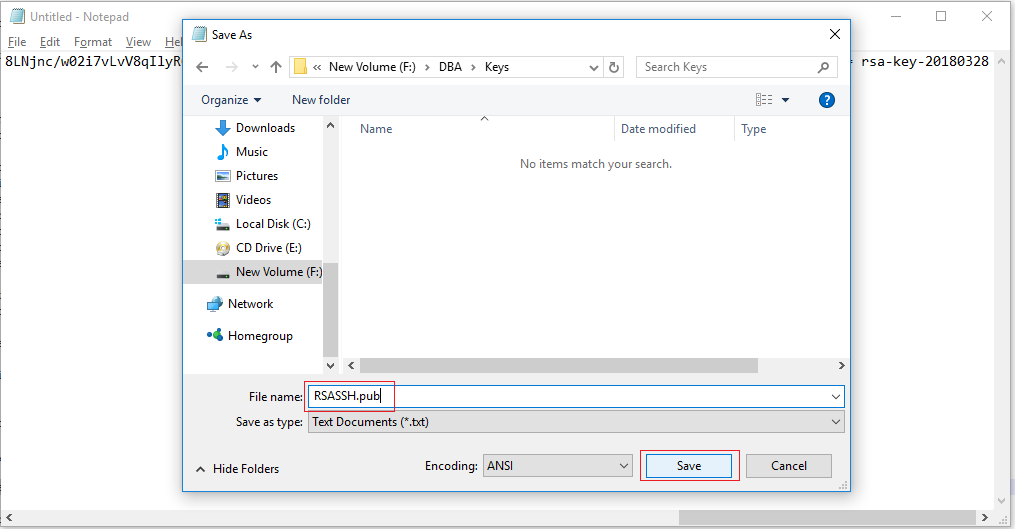Mac Generate Rsa Private Key
Idrsa idrsa.pub knownhosts. It is recommended to recreate SSH whether there is one or not. Create SSH $ ssh-keygen -t rsa -C email protected // 1. Email account of email protected when you sign up for GitHub. Generating public/private rsa key pair. I'm trying to create a private key and having an issue. When I use ssh-keygen -t rsa -b 4096 -C 'youremail@example.com', I get a private key in the following format.
Step 1: Verify that you have openssl installed.
GNU/Linux & Mac OS X users: Open a terminal and browse to a folder where you would like to generate your keypair. Windows Users: Navigate to your OpenSSL 'bin' directory and open a command prompt in the same location. Generate a CSR & Private Key: openssl req -out CSR.csr -new -newkey rsa:2048 -keyout privatekey.key.
New keys with OpenSSH private key format can be converted using ssh-keygen utility to the old PEM format. Ssh-keygen -p -m PEM -f /.ssh/idrsa There is no need to downgrade to older OpenSSH just to achieve this result. To generate private (d,n) key using openssl you can use the following command: openssl genrsa -out private.pem 1024 To generate public (e,n) key from the private key using openssl you can use the following command: openssl rsa -in private.pem -out public.pem -pubout.
If not, install openssl using:
If you are using Microsoft(r) Windows, checkout http://gnuwin32.sourceforge.net/packages/openssl.htm for details about the openssl package on Windows.
If you using Linux, you can use the default package manager to get the openssl package installed on your box. For example:
Step 2: Create a RSA private key.
server.key is a PEM RSA private key. To know more about what is a PEM file and it’s significance, read What is a Pem file and how does it differ from other OpenSSL Generated Key File Formats? at serverfault.com.


Step 3: Create the Certificate Signing Request (CSR) utilizing the RSA private key we generated in the last step.
The ‘challenge password’ is used by the Certificate Authority (CA) to authenticate the certificate owner when they have to revoke the certificate. There is no way to revoke a Self-Signed Certificate via Certificate Revocation List (CRL) (refer: https://devcenter.heroku.com/articles/ssl-certificate-self#generate-private-key-and-certificate-signing-request]
As a result of executing the above command, you will find a file named server.csr (‘csr’ stands for Certificate Signing Request) in the same directory.
Step 4: Generate a file named, v3.ext with the below listed contents:
This step is required because when you load the certificate in the Chrome browser, it would display an error portrayed in the below screenshot.
Setting the DNS.1 value in v3.ext file to be same as the Common Name that you mentioned while generating the certificate signing request would resolve the error. Refer https://stackoverflow.com/questions/43665243/chrome-invalid-self-signed-ssl-cert-subject-alternative-name-missing for more details about the subject alternate name missing error and the solution.
- Create the SSL Certificate utilizing the CSR created in the last step.
Mac Generate Rsa Private Key From File
The above command will use the Certificate Signing Request and the RSA Private Key that we generated as part of executing the previous steps and generate a Certificate file named, server.crt (‘crt’ is an abbreviation of ‘Certificate’) and place it in the same directory.
Step 5: Import the newly generated certificate in your Keychain (Mac OSX only).
Since this is a self-signed certificate, the browser would display a warning mentioning that the certificate is self-signed and the website should not be trusted as portrayed in the below-listed screenshot captured on the Chrome browser.
Click the Advanced hyperlink at the bottom of the warning page and click Proceed to hyperlink.
The browser will allow you to proceed and open the homepage but will mark the site as Not-Secure as portrayed in the image below.
To avoid this accepting the self-signed certificate everytime you restart chrome or restart your web server, follow the steps outlined at Google Chrome, Mac OS X and Self-Signed SSL Certificates to add the certificate to your Mac OSX Keychain. Restart Chrome.
Other platforms like Microsoft(r) Windows and Linux have similar techniques to import a certificate into a browser. A quick Google(r) search should be able to provide you with the exact steps based on the browser that you use.
Now Chrome should happily display the green ‘Secure’ icon against the URL when you navigate to your locally deployed website. Also, the Security tab within the Developer Tools should list the site as ‘Secure’ as portrayed in the screenshot below.
Mac Generate Rsa Private Key Vs Begin Private Key
Omnisphere 2.5 download mac. References: